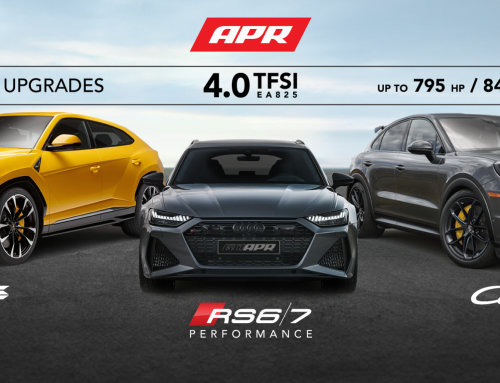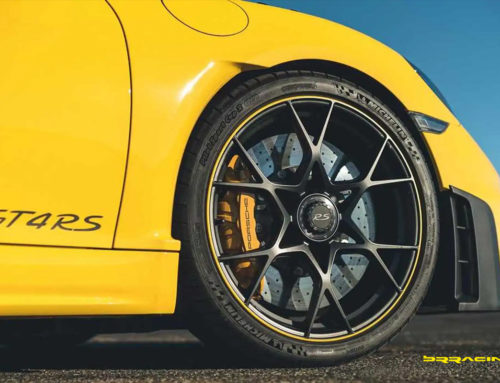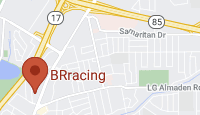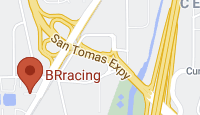We saw the introduction of the new Porsche Cayman R at the LA Auto Show in January 2011….which looks like another evolution of the species along the family lines that Porsche has demonstrated time and again (think Porsche GT3, Porsche GTS, Porsche Boxster Spyder). But, now we get a little more insight into this new car….could it really be the killer track car, as the reviews on the handling of the traditional Cayman have all been strong, many saying the best handling Porsche there is. The press got to get their feet wet with the new Cayman R recently, and now we get the real info….so, follow below as the feedback pours in – (text below from Edmunds.com article)

When the 2012 Porsche Cayman R turned up at the 2010 Los Angeles Auto Show painted Fruit Roll-Up green, we hoped that the test cars at the press drive would be available in other colors.
When we showed up at the demanding Circuito Mallorca RennArena in Spain, we did, in fact, find colors that a discerning owner could live with for more than one year of the lease contract. This is a legit issue because every time we get in any Cayman, we like it so much that we could happily drive it for a year straight, stopping only for food, waste disposal, fuel, maybe some sleep, and the occasional oil change. But that green.
The 3.4-liter flat-6 in the $66,300 Cayman R adds 10 horsepower, peaking at 200 rpm higher than the engine in the $62,100 Cayman S and $61,800 Boxster Spyder. It retains the same 273 pound-feet of torque that arrives at 4,750 rpm. The big news, however, is the 121-pound weight loss over the standard Cayman. In fact, the Cayman R, fixed roof and all, is only 44 pounds heavier than the Boxster Spyder.
And for sheer hard driving, the premium paid for the “R” hardtop is justified by the knowledge that you’ve got the most focused model the company makes — at least as far as physics is concerned. Porsche brought us here to prove just that.
Go, Green!
Wouldn’t you know it, the Cayman R setups we most wanted to test ended up painted “Peridot Metallic” — a.k.a. Fruit Roll-Up green. Hues aside, the Mallorca track very soon showed us what configuration was best should one want to spend weekends on racetracks. Roughly 45 percent of all U.S. Cayman buyers opt for the $3,660 dual-clutch PDK seven-speed and also grab the Sport Chrono or Sport Chrono Plus option, so we started with that version.
Besides the 55 added pounds of the PDK transmission, our first car lacked the $8,150 optional ceramic brakes. On the tight Mallorca track this wasn’t optimal, but the conventional stoppers never let us down. Even in Sport Plus, downshifts are sometimes slow enough that we had to anticipate the shift, which shouldn’t be necessary. Then, after five or six hot laps, we had to slow our pace as pedal feel from the conventional brakes began to suffer. Put all that together on club day and you lose ground.
We then grabbed a greenie with ceramic brakes and the manual transmission and the clouds parted to show us the light. Between the gears being right there exactly as we envisioned (thanks some to the shorter-throw $765 sport shift option) and the all-day late braking from the 13.8-inch ceramic rotors, laps were noticeably quicker. But on a more relaxed and faster track, we’d have a harder time arguing against the PDK. In any case, you’ll want the ceramic brakes unless you just want to use the Porsche Cayman R for posing at fashion shoots.
Chassis Changes
Eberhard Armbrust, Cayman vehicle dynamics leader, took us through the balancing-act changes that have gone into the Cayman R. There is no Porsche Active Suspension Management available. Rather, there’s a specifically calibrated set of Bilstein dampers and higher-rate springs that lower the R 0.8 inch relative to the Cayman S.
Negative wheel camber front and rear has been increased to improve turn-in response while cornering. Standard wheels are the forged 19-inchers from the Boxster Spyder, which, at 8.5 inches wide front and 10 inches wide rear, add half an inch of width over the Cayman S wheels and drop 11 pounds of rolling weight (24.8 pounds each vs. 22 pounds each).
The rear antiroll bar is larger in diameter, while the new front spoiler and 42-inch-wide fixed rear wing decrease front aerodynamic lift by 15 percent and rear lift by 40 percent. Thrown in standard is a proper limited-slip rear differential with 22 percent locking action under power.
With the weight-loss program, the effective center of gravity for the Cayman R versus the Cayman S dips 0.9 inch lower. Distribution of the 2,855-pound claimed dry weight of the Cayman R with a six-speed manual remains 44 percent front, 56 percent rear.
Hurry Up and Weight
The 121-pound reduction is a result of bits removed from several spots. Exterior door panels are in aluminum as on the 911 GT3, GT3 RS and Boxster Spyder, which shaves 33 pounds. The next biggest items are the 26.5 pounds dumped by losing the climate control unit and 26.5 more lost by using composite sport bucket seats. Then subtract those 11 pounds for the wheels, 9 pounds without the radio and 15 pounds by losing the dash cupholders and using Boxster Spyder-style inner door panels with pull-strap openers.
Though acceleration isn’t its most important attribute, Porsche claims the Cayman R is quickest to 60 when equipped with the PDK transmission. Using Sport Plus mode on a car equipped with the Sport Chrono package will yield a 0-60 run of 4.6 seconds, according to Porsche. But Porsche is known for its conservative acceleration claims so we wouldn’t be surprised to see test numbers that are quicker still.
Nonetheless, as was reaffirmed at the Mallorca circuit, the Cayman R is best in transitional moments in 2nd, 3rd and 4th gears. It’s into and out of the corners where this chassis and powertrain do what they’re designed to do best.
Nice Moves, Questionable Voice
As we sliced around the track, the dynamic benefits recounted to us by Armbrust were obvious. There were some clear understeer tendencies if we ever braked too late and got the line a little wrong, but with practice and stability control switched off, the Cayman R showed us its goods in later laps. Steering feel and turn-in are as exceptional as promised. We might be tempted on track days to upgrade to a suitable race tire, as the standard Bridgestone Potenzas — 235/35ZR19 (87Y) front, 265/35ZR19 (94Y) rear — seemed a tick overmatched under this relentless beating.
On a long loop of Mallorca’s inviting two-lane coastal and mountain roads, the Bridgestones were great. Also, on the road, choosing manual or PDK is just a matter of taste. However, the new sport steering wheel — now equipped with proper paddles — could be improved by fixing the paddles to the steering column. Then Porsche will have completed a proper PDK interface.
Aiding in achieving the higher power peak of 7,400 rpm is the Cayman R exhaust system with a larger-diameter exhaust section between the catalysts and mufflers. Still, this Porsche flat-6, like all factory Porsche exhausts, maintains the tradition of miserable sound. There is a $2,810 sport exhaust option, but it sounds only marginally better and is louder in muffler-bypass mode.
The Cayman Riddle
If we praise the Cayman family so much, then why does it leave Americans flat? In 2010, Porsche sold only 675 Caymans and 647 Cayman S models. What gives? It can’t just be because our perfect Cayman R would end up costing just short of $90,000. That’s an old excuse and the Cayman is still brilliant — arguably a better performance car than the 911.
So it must come down to image. Is the Cayman doomed to be the hairdresser’s car with a roof? We hope not, because the Cayman R is stunning to drive. Even its new Bilsteins are comfortable enough for everyday use. The worldwide plan, once 2012 Porsche Cayman R deliveries begin in mid-March, is to have 25 percent of total Cayman volume be Cayman R. That’s a total of 1,500-2,000 units annually until this generation of Cayman finishes its life sometime at the end of 2012.
BRracing – so, if you’re thinking about the Cayman R…..why pay the high price and only get a partial soluiton? Why not start w a Cayman, get the special light weight pieces, and put in the power everyone wants (3.8L motor), and the suspension and handling bit for a real combo track/daily driver car, and pay less. Talk to us to see how we can make one of these for you.





This website was… how do I say it? Relevant!! Finally I’ve found something that helped me.
Thanks!
I like the valuable information you provide in your articles.
I’ll bookmark your www and check again here frequently.
I’m quite sure I’ll learn many new stuff right here! Good luck for the
next!